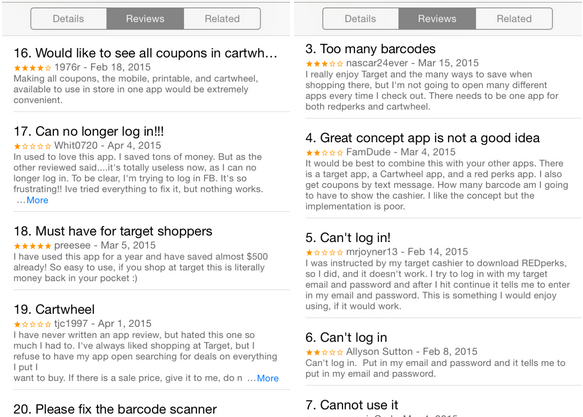
If you’re a Lilly Pulitzer fan, here’s an app for that — thanks to Target.
To celebrate its new collaboration with the high-end designer, the retailer partnered with creative agency Chandelier and digital agency Olson to launch a new app that’s also available on desktop. Target has previously offered affordable lines from Phillip Lim and Altuzarra in stores sans dedicated apps; on April 19, the preppy Lilly Pulitzer collection premieres.
But the app is not much more than an ad with bells and whistles: Partygoers wearing Pulitzer are frozen in place, and the viewer is invited to an interactive view where they can tap on outfits to inspect product details (dresses, bathing suits and beachwear, home goods, accessories and shoes make up the 250-piece line). The fashion bloggers are already scratching their heads over an unexplained Chris Noth and Nick Young appearance — Pulitzer’s Target line does not have men’s clothing, for what that’s worth.
You can check out the soirée-vertisement on your computer, but the mobile version is where the experience comes alive: The scenes follow the movement of your device, meaning to get the 360-degree view, you can spin in circles at home, pretending you’re at a pretty Lilly Pulitzer-fueled party with a choice few celebrities. (Reminder: you’re not; you’re just getting pumped up, and dizzy, for a Target line.)
But when it comes to Target’s greater mobile strategy, things are already complicated.
The app-obsessed Target shopper can currently download Target App, Cartwheel, In a Snap, Target Healthful, Target Wish List and Target Registry. Target Ticket, a streaming service, is listed online but not currently available in the U.S. Search Target in the iOS store and three more apps appear: REDperks, Target Meetings (an information organizer for business meetings) and Target Race Events 2015, an app for racing-event sponsors and attendees.
It’s a lengthy collection to list off, let alone download, keep organized and actively use. Target’s mobile app strategy is fragmented into specifics, zoning in on smaller subsets of app users with different basic needs: The customers (Target App serves general product searching and buying needs), the bargain hunters (Cartwheel and REDperks offer coupons), the list-oriented shoppers (Wish List and Registry are meant to keep gift-buying organized), and the pharmacy customers (Healthful keeps track of prescriptions).
According to Meghan Cushing, a spokesperson for the retailer, the retailer’s app brigade leads to enhanced engagement.
“Guests who engage with Target across multiple channels — in stores and digital channels — become more engaged guests, who visit Target more often and spend three times more with Target than our store-only guests.”
Cushing said she could not disclose specific engagement data.
For Jonathan Greene, vp and managing director at R/GA, multiple apps that serve separate purposes make sense, to a point.
“It’s achievable to have several applications as long as the gap is clear between them,” said Greene. “If the line blurs between shared responsibility for these apps, that’s when you get in trouble. Our attention is limited, and eventually [retailers] are competing with themselves.”
App reviews in the iOS store suggest that users are indeed confused: Different responsibilities of the apps aren’t always clear, and the user experience for some isn’t up to par.

Lauren Tucker, former svp of decision science at the Martin Agency and founder of consultancy Cooler Heads Intelligence, said that the Lilly Pulitzer app is clearly meant to generate excitement and engagement among younger shoppers. That makes sense: Not only is Lilly Pulitzer a big-name aspirational brand for students, but it’s that set of customers – millennials – who are targeted most on mobile.
But Tucker thinks the scope of the latest Target app is too narrow.
“It’s a nice tactic, but I don’t know if it’s looking to the larger strategy. It sounds like someone just said, “This sounds cool.” But that won’t necessarily deliver the results they’re looking for at the end of the quarter,” said Tucker.
Still, 360 degrees of Lily Pulitzer product placement could strike a positive chord with users. The Pulitzer app, despite Target referring to it as such, isn’t something you can download — it works on the mobile Web — which means no real work for a user.
And as Greene pointed out, it’s an experience that’s fitting for both the Target and Pulitzer brands.
“It feels very much like the Target brand,” said Greene. “It’s a special feature, and it feels more premium. A strong brand like Lilly warrants that in the context of Target,” which is far from a high-end retailer.
However, the shopper subset the latest creation serves is relatively slim: Those who are excited enough about the new collection that they’ll spend time exploring the Pulitzer party world, viewing products. It’s also an appeal to Lilly Pulitzer fans who might not shop at or engage with Target, but, according to Tucker, resources should go toward the customers a retailer already has.
“Too many of these companies aren’t realizing that their current customers are valuable,” said Tucker. “Are Target shoppers using the app or are they just doing it to hype the brand?”
At least, with Target’s do-it-all mobile strategy, customers can be assured that there’s probably a Target app out there for them.
More in Marketing

Zero-click search is changing how small brands show up online — and spend
To appease the AI powers that be, brands are prioritizing things like blogs, brand content and landing pages.

More creators, less money: Creator economy expansion leaves mid-tier creators behind
As brands get pickier and budgets tighten, mid-tier creators are finding fewer deals in the booming influencer economy.

‘Still not a top tier ad platform’: Advertisers on Linda Yaccarino’s departure as CEO of X
Linda Yaccarino — the CEO who was never really in charge.






